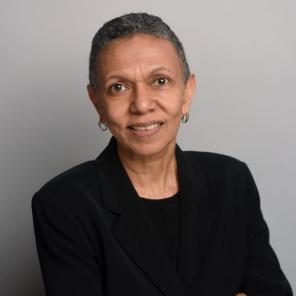
Luisa N. Borrell, D.D.S., Ph.D., is a Distinguished Professor at the Department of Epidemiology and Biostatistics, Graduate School of Public Health and Health Policy, City University of New York. Her research interest is on race and ethnicity, socioeconomic position, and neighborhood effects as social determinants of health. In addition, she focuses on the effect of nationality, nativity status, and race among Hispanics as social determinants of health. Dr. Borrell has expertise in research methods, and the analyses of large databases, including survey, census, and spatially linked data. Finally, Dr. Borrell has an extensive record in mentoring master and doctoral students, postdoctoral fellows as well as junior faculty.
1. How did you first learn about the AADOCR and what motivated you to join?
I first learned about the AADOCR from my advisor, Brian Burt, while I was in my doctoral program in the University of Michigan between 1997 and 2001. I was required to present, went to my first meeting in 1998, and I’ve been a member ever since.
2. Can you describe your research? How do you hope your work will impact others?
My research focus is on race, ethnicity, socioeconomic position, the neighborhood effect, and how those social determinants impact health. I hope I'm making a difference through my research by underscoring how social factors that in the past were neglected but are now at the forefront of health outcomes, including oral health. My first paper was published in 2001 and back then I was focusing on racial and ethnic disparity, which everybody had talked about associated with health outcomes, but nobody had put it in the context of ways to prevent the pervasive disparities in dental outcomes.
3. Can you describe your experience being a researcher from an underrepresented group in science?
Oh my goodness, that would be a book! Starting from the fact that when you are a minority or underrepresented researcher, you tend to focus on issues that are close to your heart. Those are not always the flashy or fundable issues. But I have survived—I have been published and funded, so I believe that my work is important. My work has not been exclusively in dental research. I have been in the school of public health, and I have done work on a wide range of outcomes. This has been to my advantage as it has given me a bigger platform. Then when I publish something on periodontal disease, which is my main focus, people are aware of my work and that gives a voice to my research in oral health.
4. You are a mentor for the 2021-22 class of the AADOCR Mentoring an Inclusive Network for a Diverse Workforce of the Future (AADOCR MIND the Future). Thank you for volunteering your time! What motived you to be a mentor for this program?
Sheri Herren reached out to me and explained the program and I agreed right away. This is right on my alley and what I do on a daily basis. I have been mentoring since I started as a junior faculty. I have mentored over 50 and doctoral students and junior faculty; the majority of my doctoral students are now in an academic position. I had so many wonderful mentors during my Ph.D. so I wanted to pay it forward and mentoring was something that has always come naturally for me. And interestingly, a lot of my mentees are minorities. But we don’t just need to have a diverse group of students or junior level researchers, we also need them at the top leadership position in order to make a difference. And that is why mentoring now is more important than ever to prepare the future cadre of scientists.
5. Based on your experience, how would you encourage AADOCR members and other professional associations to help increase the diversity of the research workforce and support those who are members of underrepresented minority/ethnic groups?
In order to increase the diversity of the oral health research community, there needs to be more funding opportunities. A lot of people get discouraged and either go back to practice, become a faculty member, or just stay in the dental clinic as a faculty attending. And this increased funding has to be an intentional, top-down approach, providing programs and proper training. Another group I think is deserving of this attention is those practicing dentists that want to do research on what they are observing in their community, but they don't have the skill and training to do so. People may feel excluded and lost and we need to reach out to them as their insights and contribution to research can be a game changer to eliminate oral health inequities in the U.S.




